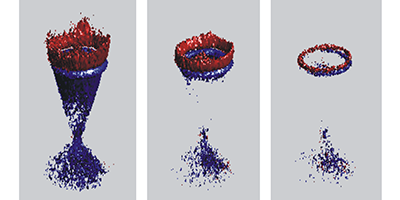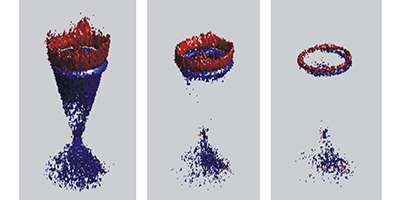Electrons that Take the Heat
Electrons on the surfaces of topological insulators can travel with little resistance, protected from scattering or localization by the very rules of quantum mechanics. To exploit such physics for spintronics and other applications, one needs to understand how these electrons couple to their surroundings, by what mechanisms, and how quickly they lose their energy. In Physical Review Letters, Yihua Wang at the Massachusetts Institute of Technology, Cambridge, and colleagues used an ultra-high-speed camera to visualize the cooling of electrons in a topological insulator.
The authors fired -femtosecond laser pulses at the material, exciting carriers. Higher-photon-energy pulses, delayed in time, extracted electrons by the photoelectric effect. Wang et al. characterized the photoemitted electrons as they varied the laser pulse delay, obtaining a series of snapshots of the energy and momentum distribution of electrons inside the topological insulator at different stages of the cooling process.
By analyzing their ultrafast movies, the authors were able to pinpoint the channels by which the surface electrons dissipate their energy and identified two distinct relaxation regimes. At room temperature, surface electrons quickly transfer their energy to bulk electrons with the help of lattice vibrations. At low temperatures, bulk-surface coupling is suppressed and cooling occurs via a slower mechanism that is mediated only by acoustic phonons.
The latter regime, in which a population of hot surface carriers can be photogenerated and maintained over long time scales, may provide an intriguing path for harvesting solar energy in photothermoelectric devices based on topological insulators. – Matteo Rini





